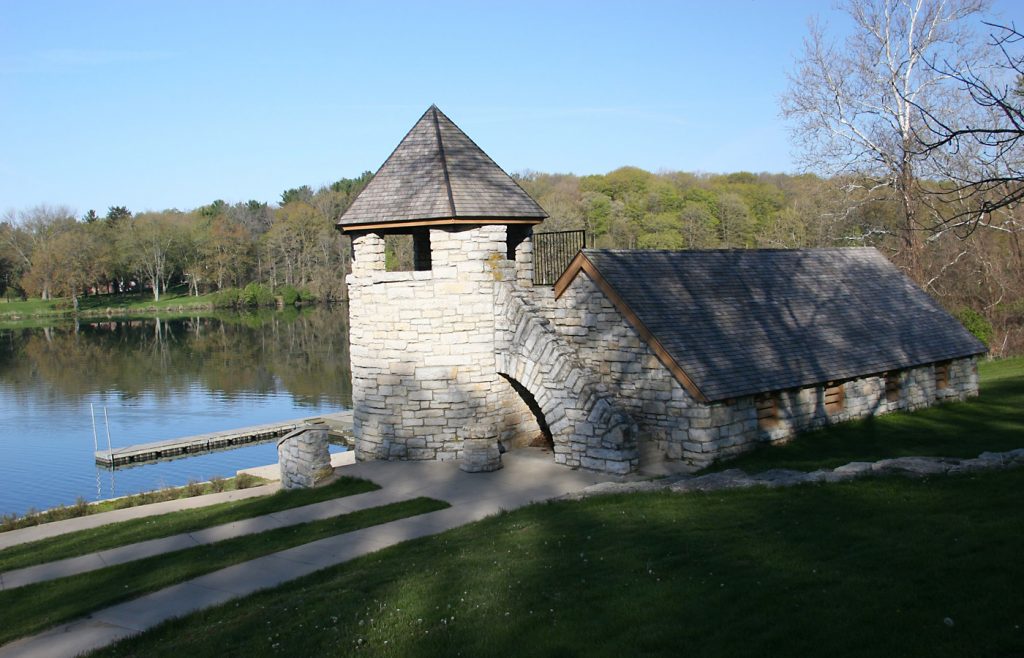
Castles are not the first thing that come to mind when people think of Iowa, but there are at least eight castle-like structures in our state.
Spread throughout southeast, central, and northwest Iowa, these medieval-style constructions make a great excuse for a road trip. Satisfy your craving for Middle Ages ambience and hit the road to experience these romantic stone buildings.
Ida Grove in Northwest Iowa
The largest concentration of castles is in Ida Grove, a small town nestled in the rolling hills of northwest Iowa.
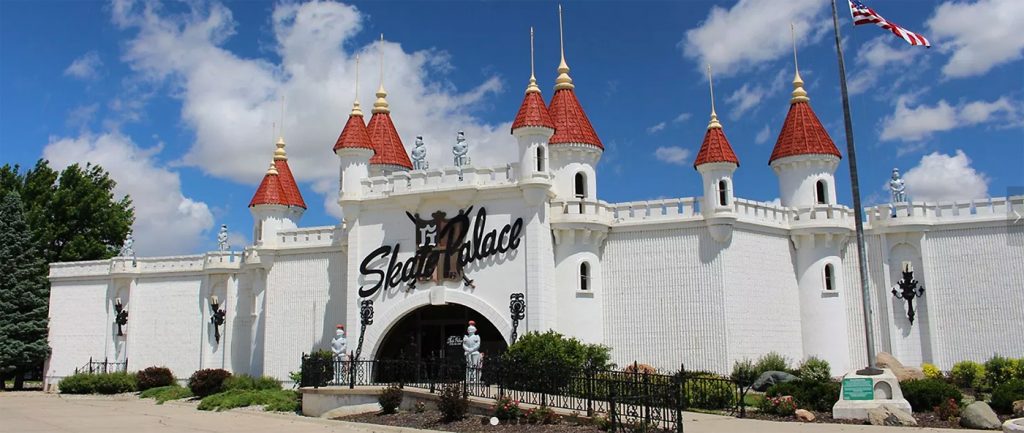
Byron Godbersen (1925–2003), an inventor and entrepreneur who founded Midwest Industries there in 1954, fell in love with medieval castles on a trip to Europe. Consequently, over the next few decades, he integrated the castle design into local buildings, including a castle-themed airplane hanger, roller-skating rink, library, newspaper office, golf course, and his personal mansion.
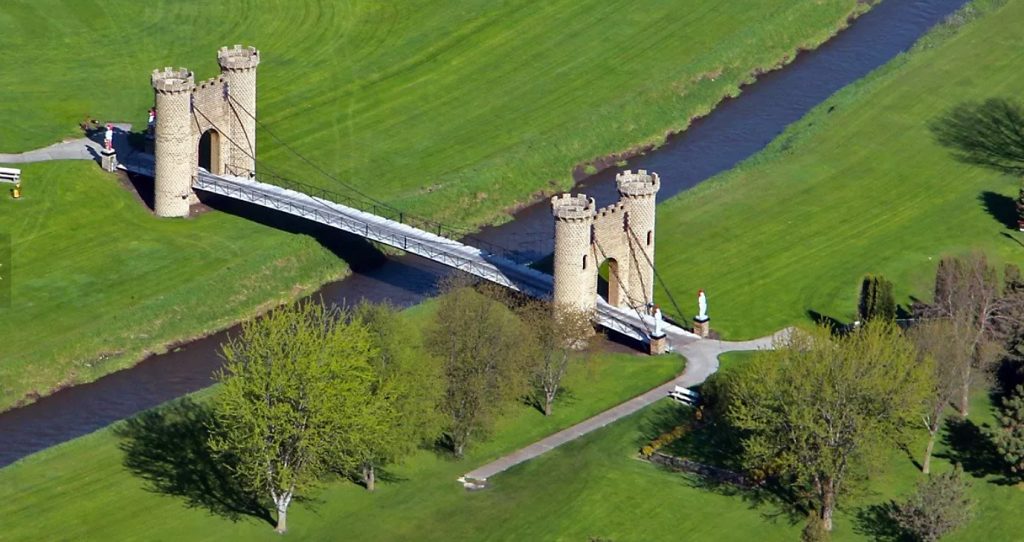
The stone observation tower that welcomes visitors to Ida Grove was completed in 1971. The golf course suspension bridge with two stone towers spanning Odebolt Creek was finished around the same time.
Godbersen didn’t limit himself to castles. After constructing a lake in 1969, named after his wife, LaJune, Godbersen built a half-scale replica of the HMS Bounty in 1970 with the help of his Midwest employees. Lake LaJune is located on a 290-acre spread that’s also home to Godbersen’s private castle, with its own moat and drawbridge.
Most of these structures are privately owned, so they are rarely open for tours, but they can be easily viewed from the road.
For more information, visit IdaGroveIa.com.
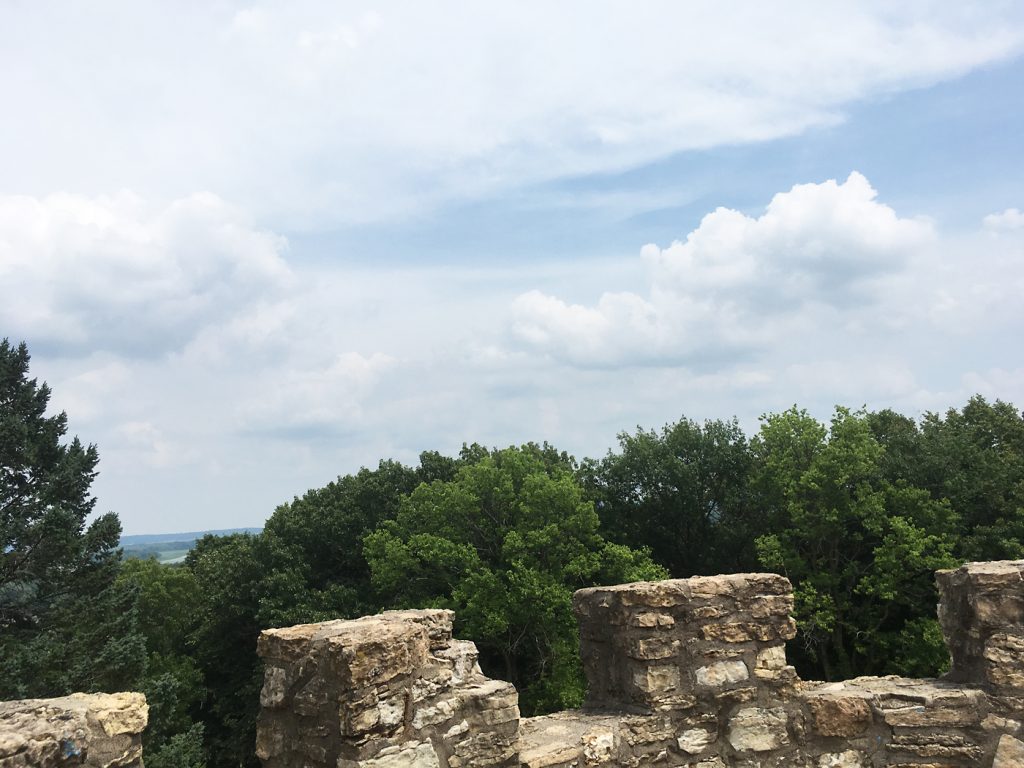
Clinton
Along the Mississippi, the city of Clinton boasts a circular stone tower referred to as “the Castle” by locals. Housed in Eagle Point Park, the tower was built by the WPA in 1937. Spiral staircases link the two stories of the tower, which has an impressive view of the Mississippi River and the surrounding woodlands.
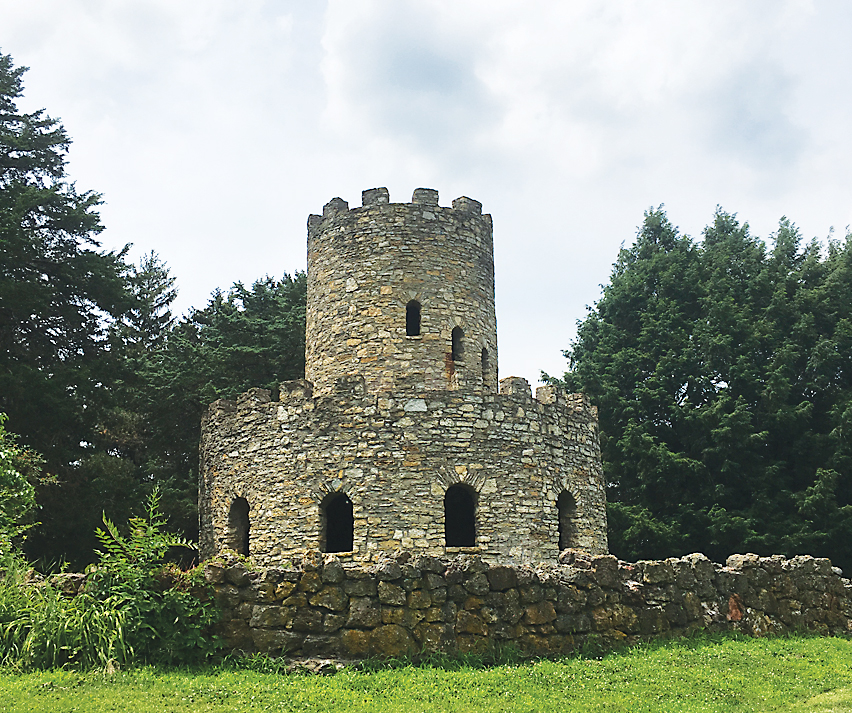
Eagle Point Park is in the northernmost part of the Lyons District, and its entrance also leads to a graveyard. The park has a number of paved loops connecting scenic overlooks, playgrounds, and picnic areas. The centrally located Lodge has the most spectacular view of the river.
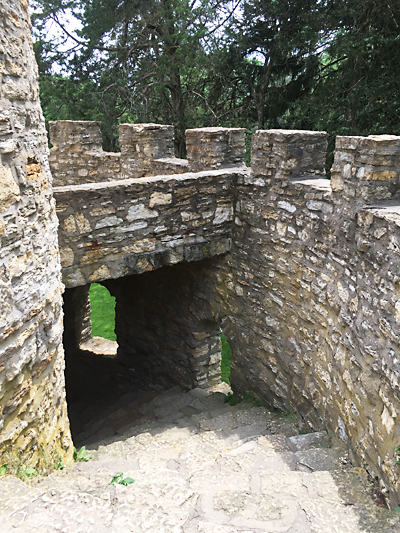
The castle is located past a dog park and playground to the right of the entrance gate, with no obvious signage. A one-way road at the end of the parking lot curves down and around the hill on which the tower is situated. It is well worth the visit.
Dubuque
Built in 1897, the Julien Dubuque Monument is a turret-like structure near Dubuque, located in the Mines of Spain Recreation Area. This Late Gothic Revival tower perches on a bluff overlooking the river. Because the tower is a memorial, entrance inside is not allowed, but its impressive exterior is worth seeing, and the bluff itself provides a striking panoramic view of Dubuque, the river, and the surrounding area. Two free viewfinders near the monument offer views of nearby landmarks and a magnified view of the area.
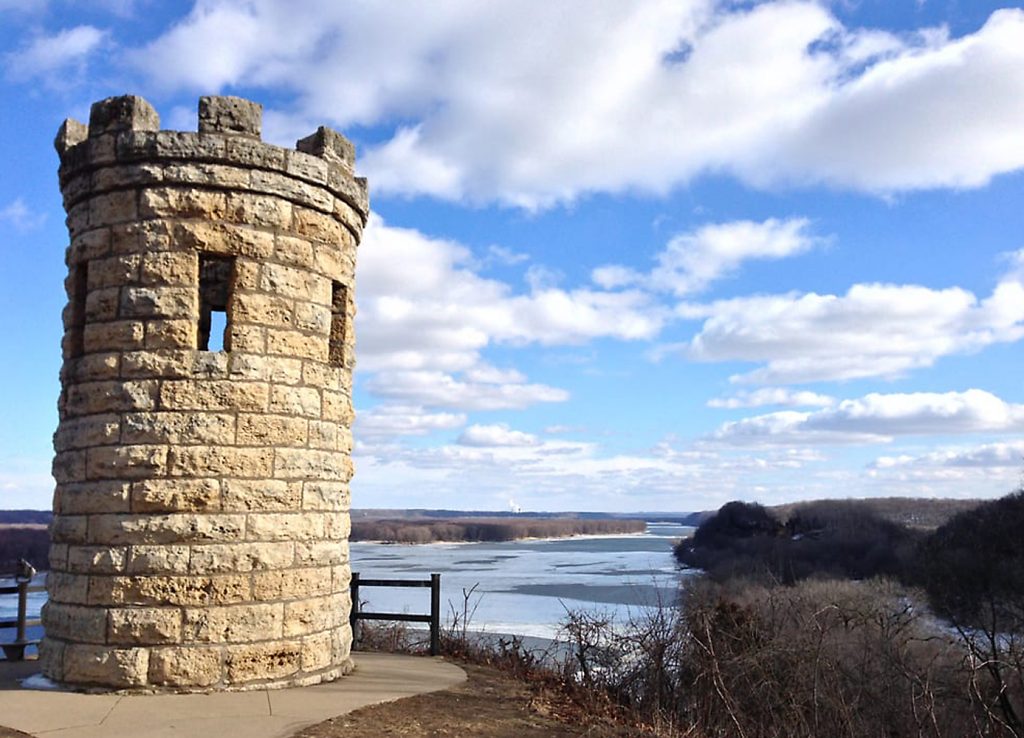
You’ll also find some interesting historical information about Julien Dubuque and an additional memorial boulder for Dubuque’s friend, Meskwaki chief Peosta, whose daughter Potosa married Dubuque on the trail leading up to the monument. A friend to the Meskwaki, Dubuque was buried with tribal honors when he died in March of 1810. A log mausoleum marked his resting place until the current monument was built in 1897. The monument was listed on the National Register of Historic Places in 1988.
For more information about the Julien Dubuque Monument, visit dubuqueiowa.org.
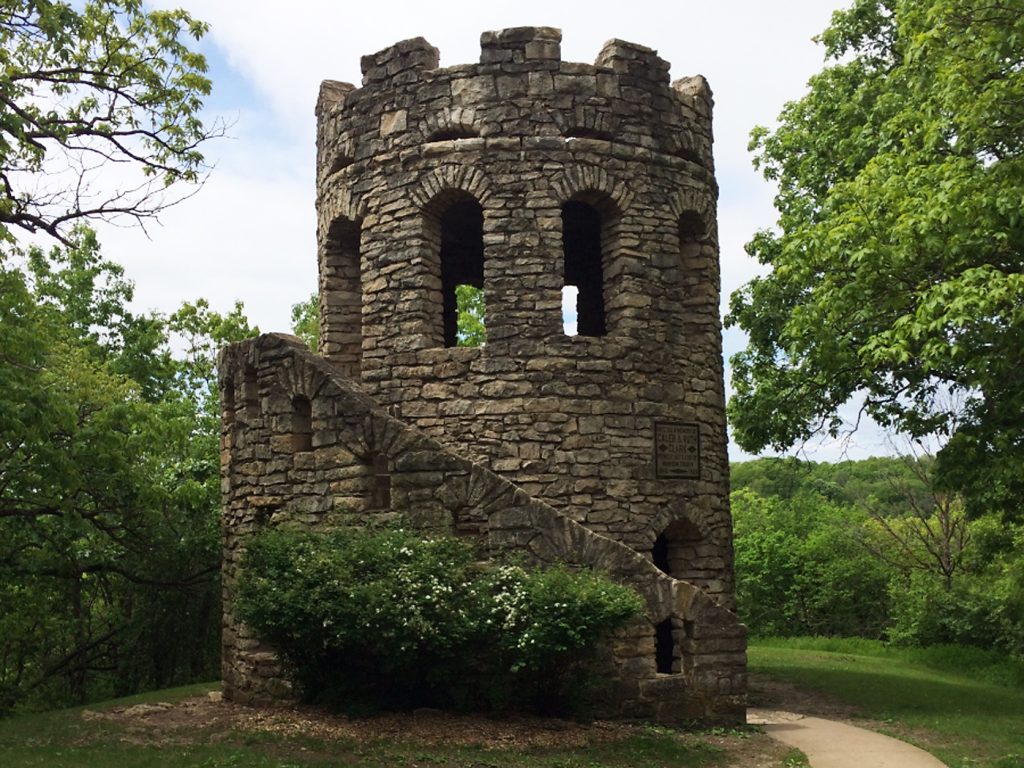
Madison County
Madison County has more to offer than its famous covered bridges. Located in Winterset City Park, Clark Tower is a three-story, castle-like limestone tower. Built in 1926, on the 80th anniversary of the founding of Madison County, the 25-foot-tall tower memorializes two of the first white settlers of Madison County, stonemason Caleb Clark and his wife Ruth Clanton Clark. Constructed of native limestone, it offers a stunning view of the Middle River valley. A spiral staircase leads to the second floor, and a metal ladder leads to the top. Clark Tower sits at the end of a mile-long winding gravel road, so a short hike or a careful drive is required to get there. The surrounding woods are truly picturesque.
For more information, visit MadisonCounty.org.
Dundee
Iowa’s first state park, Backbone State Park in Dundee, was dedicated in 1920. It was named for the highest point in northeast Iowa, the “Devil’s Backbone,” an 80-foot-high narrow ridge of bedrock carved into sheer cliffs and columns by a loop of the Maquoketa River. With 2,001 heavily wooded acres, the park serves as a refuge for a variety of wildlife.
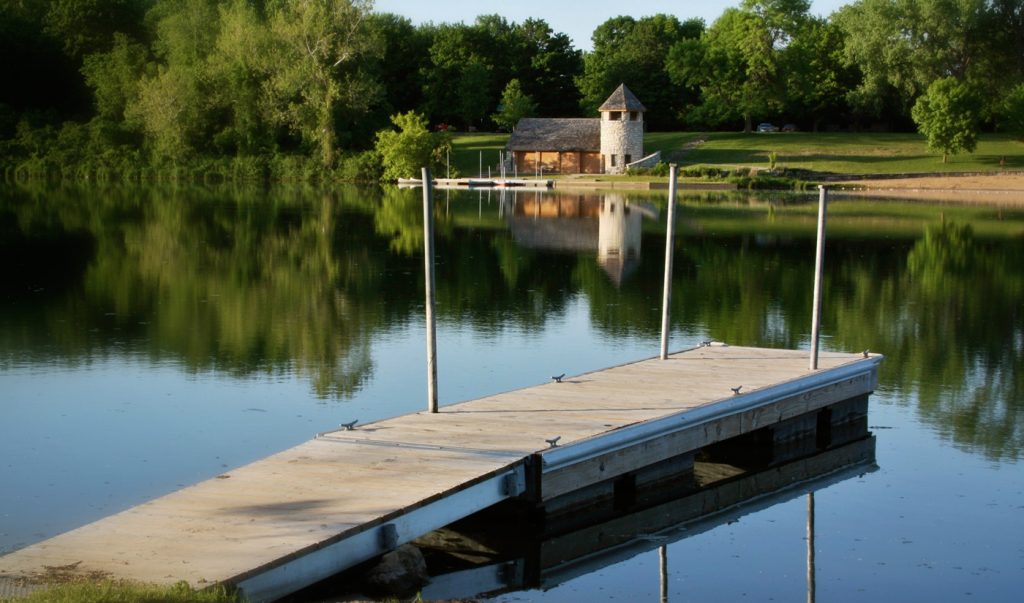
In addition to geographical splendor, natural beauty, and various outdoor activities, visitors can admire its medieval-style stone boathouse with a squat castle tower. Built of rough limestone blocks, the boathouse has a great view of the eastern shore of Backbone Lake.
For more information, visit IowaDNR.gov.
